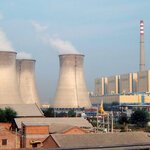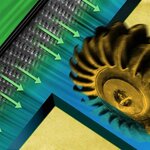Energy

As early as 2015 China’s use of thermal coal for electricity could peak. Bret Arnett/Flickr, CC BY-NC-SA
By James Whitmore, The Conversation
China’s use of coal for electricity could peak as early as next year, then decline until 2020 in a turnaround of “global importance”, according to economist Ross Garnaut in a lecture presented at the Melbourne Sustainable Society Institute, University of Melbourne.
The shift means the world has a much better chance of keeping global warming below 2 degrees C — the internationally-agreed guardrail against dangerous climate change.
Slowing economic growth…

Next year, American consumers will finally be able to purchase fuel cell cars and they are zero-emissions vehicles but, like current electric cars, not really, since the cars will run on hydrogen made from natural gas.
Water electrolysis is a better way to go but it isn't going to be emissions free either, yet it is getting a little closer. Researchers at Stanford University have developed a low-cost, emissions-free device that uses an ordinary AAA battery to produce hydrogen by sending an electric current through two electrodes that split liquid water into hydrogen and oxygen gas.…

Water is abundant and so is sunlight, and using them to create hydrogen makes sense for a cleaner energy future, where biological systems powered by sunlight can manufacture hydrogen to use as fuel.
The way that plants produce hydrogen by splitting water has been poorly understood but answers are getting closer. A research team created a protein which, when exposed to light, displays the "electrical heartbeat" that is the key to photosynthesis.
The system uses a naturally-occurring protein and does not need batteries or expensive metals, meaning it could be affordable in developing…

Where the river meets the sea, there is the potential to harness a significant amount of renewable energy, according to a team of mechanical engineers at MIT who evaluated the method of power generation called pressure retarded osmosis (PRO), in which two streams of different salinity are mixed to produce energy.
A pressure retarded osmosis system of this kind takes in river water and seawater on either side of a semi-permeable membrane. Through osmosis, water from the less-salty stream would cross the membrane to a pre-pressurized saltier side, creating a flow that can be sent through a…

Researchers have developed a way to use windows for solar energy - without ruining your view.
The new technology is a solar concentrator, called a transparent luminescent solar concentrator, that is placed over the window and creates solar energy while still allowing people to see through it. The Michigan State University researchers say it can also be used on buildings, cell phones or any other device that has a flat, clear surface.
Attempts to create solar cells with luminescent plastic-like materials is not new but past efforts yielded poor results – the energy production was inefficient…

The downside to solar and wind is not just low efficiency and high cost, it is also that they are intermittent. But that impacts cost also. Relying on them has meant contracting with traditional energy companies to be 'on demand' at far higher cost than they otherwise would be, to be on call to shut off or add electricity as needed.
Wind will never be a serious alternative but solar is the future. Yet no matter how good solar becomes, there will still be a problem of storage and riding out its fluctuations - and existing storage capacities are far from adequate for the purpose.
While…

20 years ago, nuclear science died a horrible death at the hands of President Clinton and Senator John Kerry. It's science fiction fantasy to imagine now what nuclear science would be like if the last 40 years had been spent with American ingenuity and technological prowess tackling the issue, rather than it becoming a political football to placate anti-science activists before finally being killed off.
Its legacy haunts us today. With nuclear energy blockaded well before that, and modern hydraulic fracturing not yet created, America had to rely more on coal. Environmental groups never accept…
The downside to electric cars is both cost and driving range. Cost simply takes time and adoption; as has been shown in every technology from agriculture to computers, it only gets affordable for the masses after enough rich people have uptake. Driving range is a show-stopper for many, though. The stories in Silicon Valley of 'charge rage', where employees at companies are firing off angry emails at each other over available plugs rather than working, have made fewer companies want to install charging stations at all. But without them, many people can't get home.
Though manufacturers won't…

It
wasn't explicitly tasked by Congress with assessing the safety
culture of nuclear facilities.
Nevertheless,
an extensive new
report written by the Committee on Lessons Learned from the
Fukushima Nuclear Accident for Improving Safety and Security of U.S.
Nuclear Plants devoted an entire chapter to the issue.
The
report, published by the National Academies Press, recommends that
regulators such as the Nuclear Regulatory Commission guard against
erosion of their independence from outside influences, that
regulators and industry continually monitor safety culture, and that
both increase their…
With carbon dioxide from the American energy sector plummeting back to early 1990s levels and coal, the dirtiest energy source, back at early 1980s levels, environmentalists have tried to turn on natural gas and its primary component, methane.
Don't be fooled. Other sources, like solar, are not ready yet, wind never will be and nuclear science is reviled by Democrats so methane is the best bridge to the future (which will eventually be solar). A new technique transforms the delightful stinky, air-polluting landfill gas into a hydrogen fuel cell, according to a presentation at National…